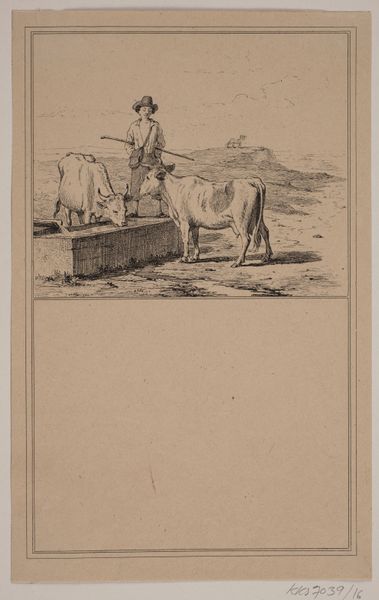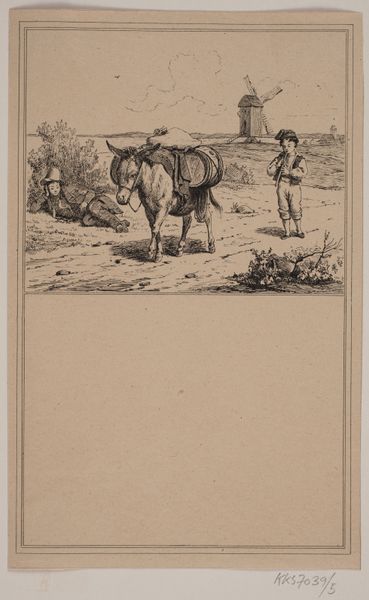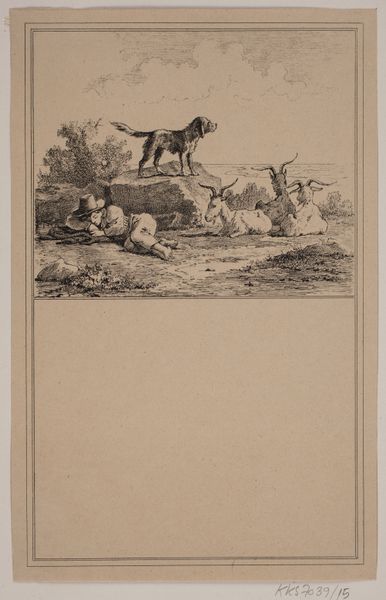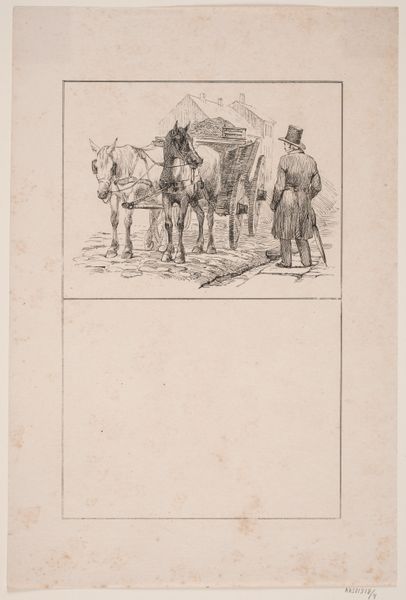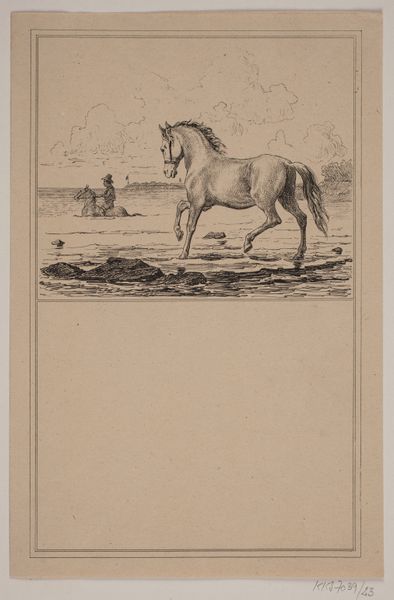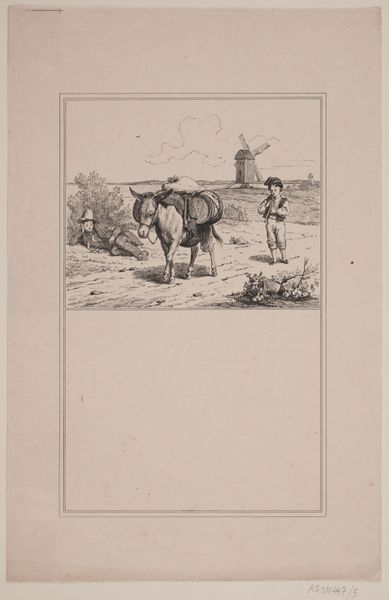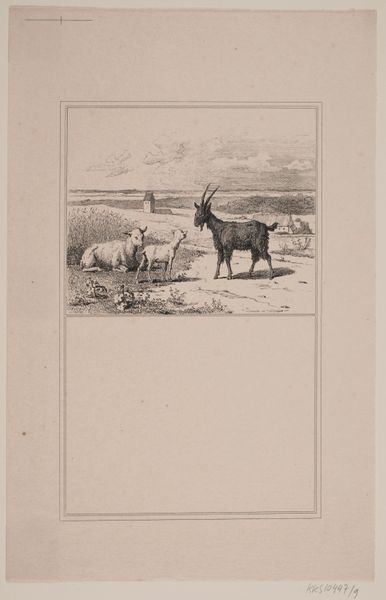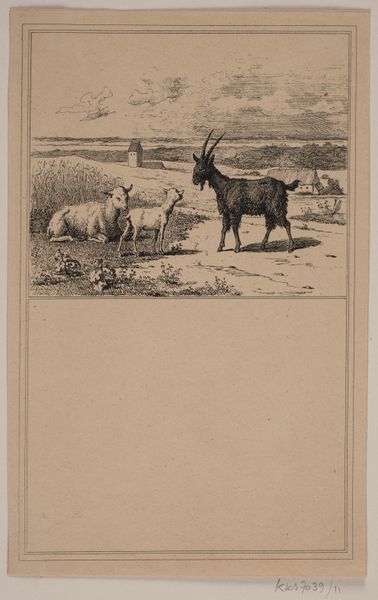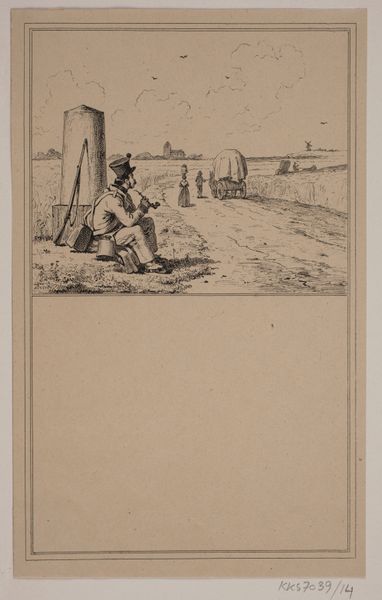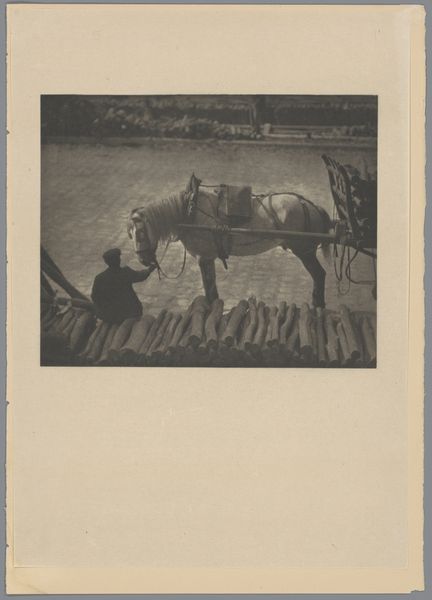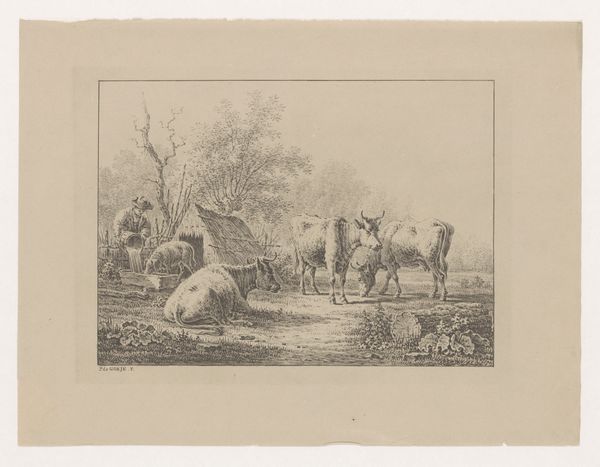
Koen og drengen. Nr. 12 i Chr. Winther og M. Rørbye, "25 Billeder for små børn" 1846
0:00
0:00
drawing, lithograph, print, etching
#
drawing
#
lithograph
# print
#
etching
#
landscape
#
romanticism
#
genre-painting
Dimensions: 205 mm (height) x 130 mm (width) (brutto)
Curator: This is "Koen og drengen. Nr. 12 i Chr. Winther og M. Rørbye, "25 Billeder for små børn"" from 1846. The piece is by Adolph Kittendorff and it's a drawing rendered through lithography and etching. Editor: It strikes me as incredibly peaceful. The rendering is simple, yet the contrast gives the scene real depth. Curator: Absolutely. Considering the historical context, remember the impact of the printing press. Lithographs like this, combined with etching, meant images became widely accessible to the Danish public. Consider how different the relationship was to visuals then. Editor: Yes, let's think about that shift. Mass production democratizing art, in a way. The availability of images fundamentally changed society. And here we have a rural subject – a cow, a boy, a gate – presented perhaps as an ideal to this emerging class of art consumers? Curator: Exactly! We also can’t ignore the material reality of creating this etching. Someone had to painstakingly transfer this design, treating the metal, inking the plate… their labor contributed meaning to the final product. Who were those people? Editor: A fascinating point. And note how the artists chose etching and lithography. There’s an implied level of craft, connecting the art to the artisans who printed them. We also should consider that a whole album of these images would’ve been relatively expensive, thus a symbol of high-status taste. Curator: Yes, even as they brought images to more homes. The materials themselves suggest a hierarchy that can't be ignored, in its availability and mode of production. Plus, prints like these fueled debates around aesthetics and national identity. Editor: And it is through the socio-political and art institutions like our museums that such cultural ideals were displayed, disseminated, and immortalized for public audiences. These simple, familiar scenes reinforced broader narratives and promoted public values through familiar visual codes. Curator: Well, looking at this print has certainly deepened my understanding of 19th-century image culture and all of the people and conditions involved in bringing this pastoral landscape into people’s homes. Editor: Indeed, and by examining art through these layered histories, we expose its complex roles in shaping public perception, power structures, and access.
Comments
No comments
Be the first to comment and join the conversation on the ultimate creative platform.
